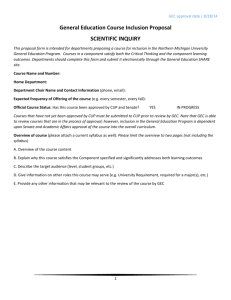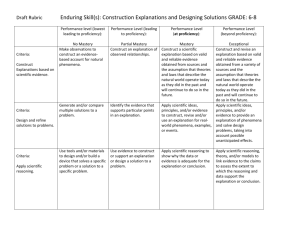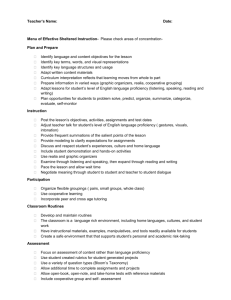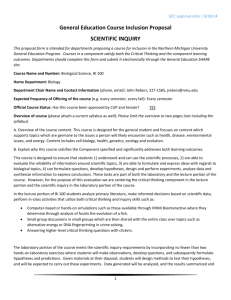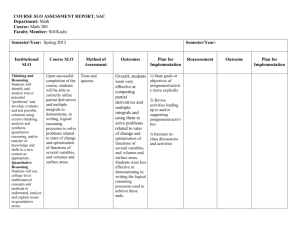Quantitative Reasoning and Analysis Inclusion Form
advertisement
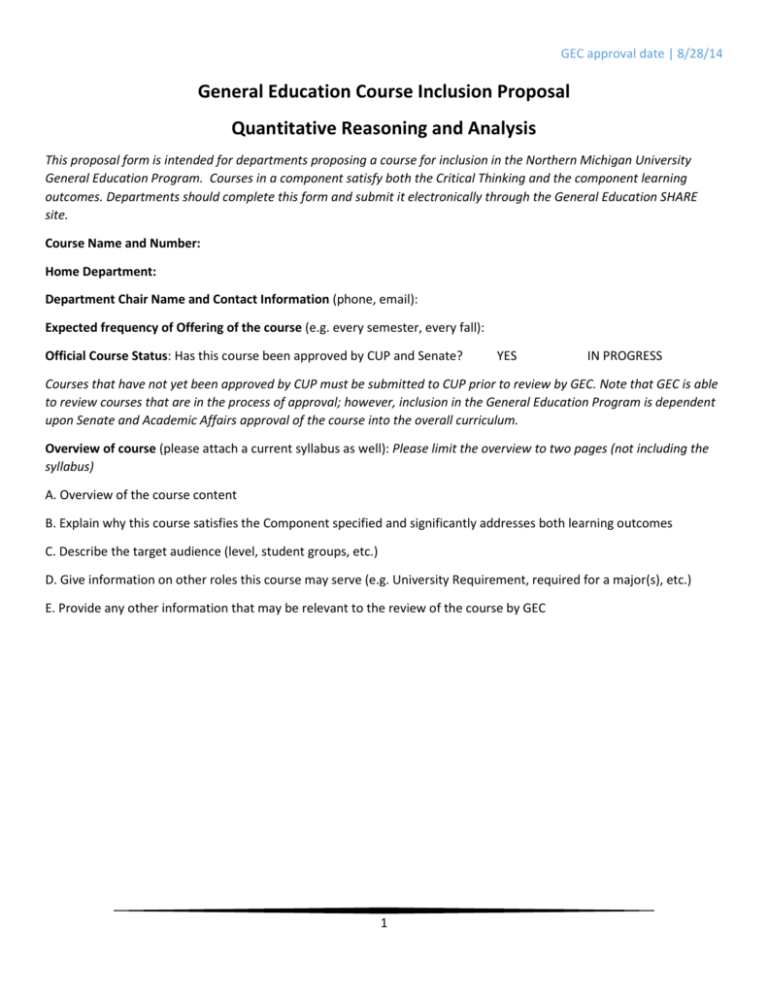
GEC approval date | 8/28/14 General Education Course Inclusion Proposal Quantitative Reasoning and Analysis This proposal form is intended for departments proposing a course for inclusion in the Northern Michigan University General Education Program. Courses in a component satisfy both the Critical Thinking and the component learning outcomes. Departments should complete this form and submit it electronically through the General Education SHARE site. Course Name and Number: Home Department: Department Chair Name and Contact Information (phone, email): Expected frequency of Offering of the course (e.g. every semester, every fall): Official Course Status: Has this course been approved by CUP and Senate? YES IN PROGRESS Courses that have not yet been approved by CUP must be submitted to CUP prior to review by GEC. Note that GEC is able to review courses that are in the process of approval; however, inclusion in the General Education Program is dependent upon Senate and Academic Affairs approval of the course into the overall curriculum. Overview of course (please attach a current syllabus as well): Please limit the overview to two pages (not including the syllabus) A. Overview of the course content B. Explain why this course satisfies the Component specified and significantly addresses both learning outcomes C. Describe the target audience (level, student groups, etc.) D. Give information on other roles this course may serve (e.g. University Requirement, required for a major(s), etc.) E. Provide any other information that may be relevant to the review of the course by GEC 1 GEC approval date | 8/28/14 PLAN FOR LEARNING OUTCOMES CRITICAL THINKING Attainment of the CRITICAL THINKING Learning Outcome is required for courses in this component. There are several dimensions to this learning outcome. Please complete the following Plan for Assessment with information regarding course assignments (type, frequency, importance) that will be used by the department to assess the attainment of students in each of the dimensions of the learning outcome. Type refers to the types of assignments used for assessment such as written work, presentations, etc. Frequency refers to the number of assignments included such as a single paper or multiple papers. Importance refers to the relative emphasis or weight of the assignment to the entire course. For each dimension, please specify the expected success rate for students completing the course that meet the proficiency level and explain your reasoning. Please refer to the Critical Thinking Rubric for more information on student performance/proficiency in this area. Note that courses are expected to meaningfully address all dimensions of the learning outcome. DIMENSION Evidence Integrate Evaluate WHAT IS BEING ASSESSED Assesses quality of information that may be integrated into an argument Integrates insight and or reasoning with existing understanding to reach informed conclusions and/or understanding Evaluates information, ideas, and activities according to established principles and guidelines PLAN FOR ASSESSMENT 2 GEC approval date | 8/28/14 PLAN FOR LEARNING OUTCOMES QUANTITATIVE REASONING AND ANALYSIS Attainment of the QUANTITATIVE REASONING AND ANALYSIS Learning Outcome is required for courses in this component. There are several dimensions to this learning outcome. Please complete the following Plan for Assessment with information regarding course assignments (type, frequency, importance) that will be used by the department to assess the attainment of students in each of the dimensions of the learning outcome. Type refers to the types of assignments used for assessment such as written work, presentations, etc. Frequency refers to the number of assignments included such as a single paper or multiple papers. Importance refers to the relative emphasis or weight of the assignment to the entire course. For each dimension, please specify the expected success rate for students completing the course that meet the proficiency level and explain your reasoning. Please refer to the Rubric for more information on student performance/proficiency in this learning outcome. Note that courses are expected to meaningfully address all dimensions of the learning outcome. DIMENSION WHAT IS BEING ASSESSED Calculation Ability to perform mathematical/numerical operations. Ability to manipulate quantitative data to produce new data. Analysis/Application PLAN FOR ASSESSMENT Ability to use data to make judgments and draw conclusions. Interpretation Ability to explain information presented in mathematical forms (e.g. equations, graphs, diagrams, tables, and words) 3
